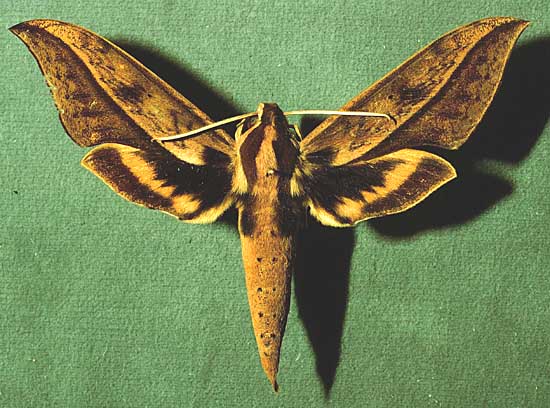
Xylophanes acrus male courtesy of Dan Janzen.
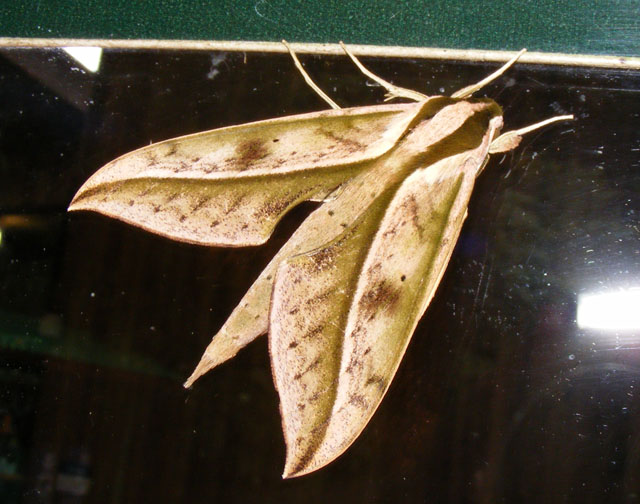
This site has been created by Bill Oehlke.
Comments, suggestions and/or additional information are welcomed by Bill.
TAXONOMY:
Family: Sphingidae, Latreille, 1802 |
|
|
Updated as per Catalogo de las Especies de Sphingidae en Honduras, Ana Clariza Samayoa and Ronald D. Cave;
December 2009 Updated as per personal communication with Galerita Janus (Mount Tortumas, Chiriqui, Panama, July 15, 2016, 1880m; March 3, 2020 |


This site has been created by Bill Oehlke.
Comments, suggestions and/or additional information are welcomed by Bill.
TAXONOMY:
Family: Sphingidae, Latreille, 1802 |
"Very similar to Xylophanes cyrene but generally somewhat more greenish and without the pinkish tint of that species (turns brownish with age). Very similar to Xylophanes cyrene but the three thin postmedian lines basal to the single prominent postmedian line heavier and distinctly crenulated, especially the most distal line (poorly defined and evenly curved in Xylophanes cyrene), and the submarginal line of vein spots often linked by a crenulated line (missing in some specimens)." CATE
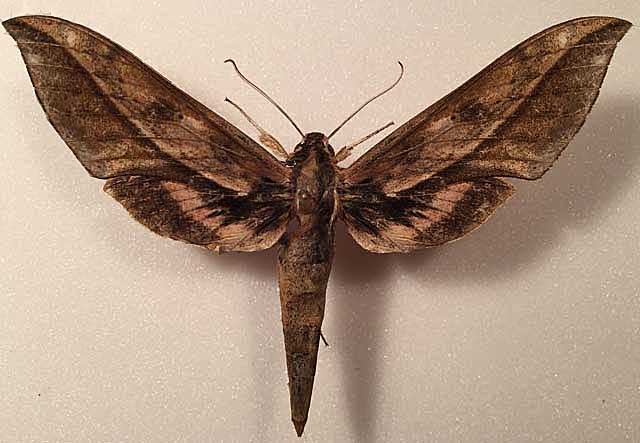
Xylophanes acrus, Mount Totumas, Chiriqui, Panama,
July 16, 2016, 1880m, courtesy of Galerita Janus,
identification and figital repair by Bill Oehlke.
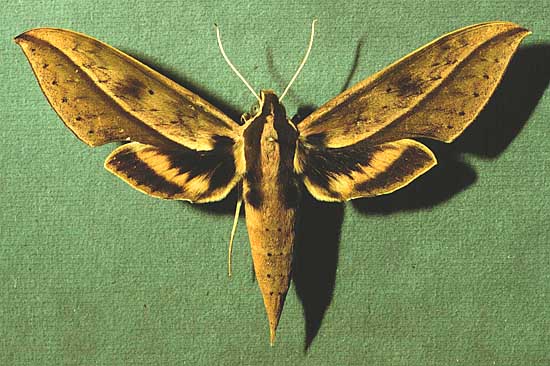
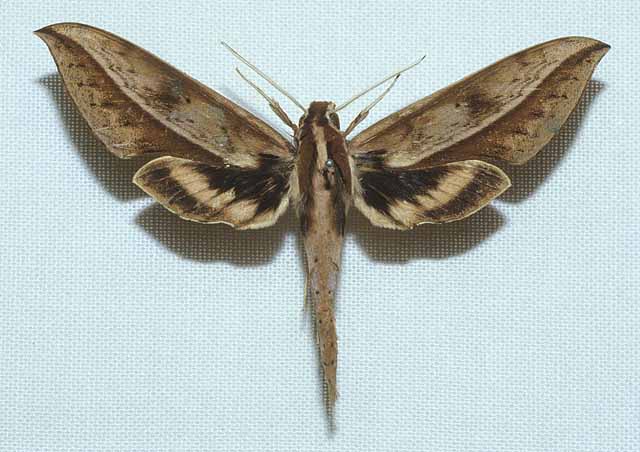
Xylophanes acrus male, courtesy of Hubert Mayer copyright.
EGGS, LARVAE, PUPAE:Larvae feed on Psychotria chiriquina, Psychotria monteverdensis, Psychotria panamensis and Psychotria nervosa of the Rubiaceae family and on Pavonia guanacastensis of the Malvaceae family.Moths emerge approximately one-two months after larvae pupate. Larvae and pupa, Costa Rica, courtesy of Dan Janzen. | 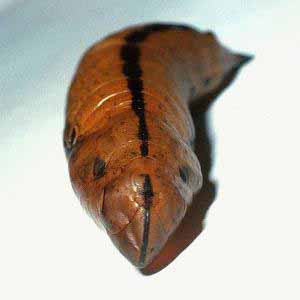 |
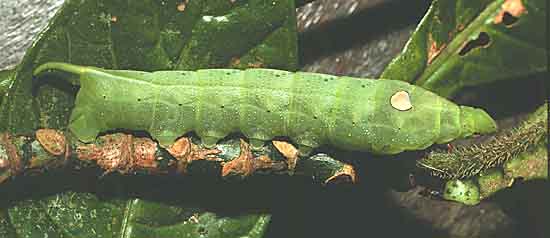

PPU III is dark green with brown rhomboids on the back, black false eyes with with brown ring and also blue and yellow, PU caterpillar is quite similar to Xylophanes hannemanni but the colors in the eye blur one into the other; last instar looks like Xylophanes anubus but has a bit of blue in the yellow ring at the top of the false eye.
Larvae are subject to parasitization by Hyphantrophaga sp. 10 of the Tachinidae family.
Use your browser "Back" button to return to the previous page.
Goto Main Sphingidae Index
Goto Macroglossini Tribe
Goto Central American Indices
Goto Carribean Islands
Goto South American Indices
Goto U.S.A. tables
The pronunciation of scientific names is troublesome for many. The "suggestion" at the top of the page is
merely a suggestion. It is based on commonly accepted English pronunciation of Greek names and/or some
fairly well accepted "rules" for latinized scientific names.
The suggested pronunciations, on this page and on other pages, are primarily put forward to assist those who hear with internal ears as they read.
There are many collectors from different countries whose
intonations and accents would be different.
"Xylo" is the Greek word for wood. The specimen type for the genus Xylophanes is Xylophanes anubus. Perhaps ? when Hubner
examined that species, the yellow-orange and brown tones of the forewings suggested wings of wood.
The species name "acrus" might refer to the sharp forewing tips of this species.